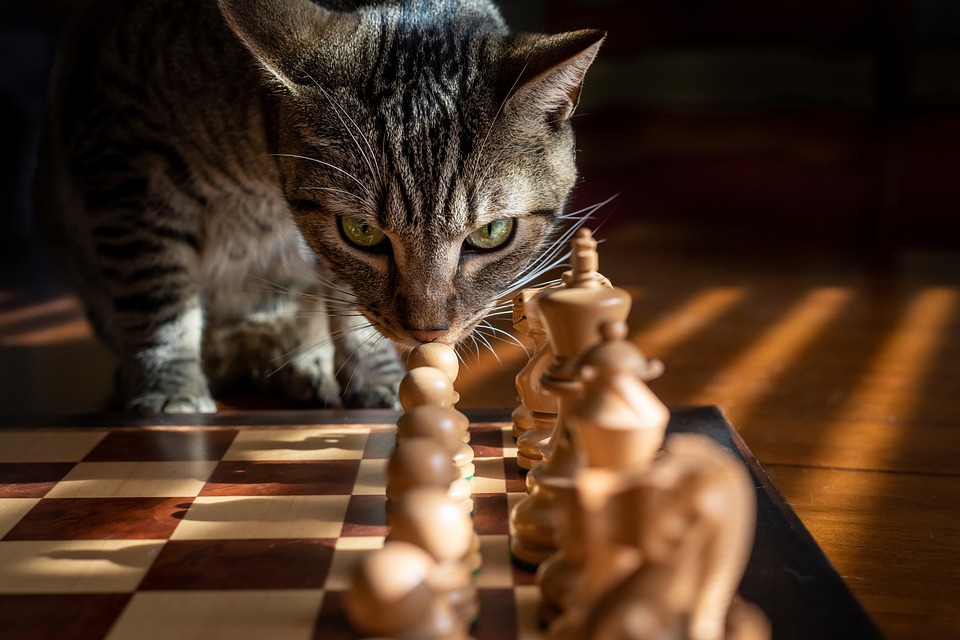Introduction:
Litter box avoidance is a common and frustrating problem faced by many cat owners. It can lead to soiled carpets, unpleasant odors, and strained relationships with our beloved feline companions. However, with proper understanding and intervention, this issue can often be resolved. In this article, we will delve into the various reasons behind litter box avoidance in cats and provide effective strategies to address the problem.
I. Understanding Litter Box Avoidance:
a. The Significance of Proper Litter Box Use:
Proper litter box use is essential for both the cat’s physical and mental well-being. Cats are naturally clean animals and have an instinctual need to eliminate in a designated area. Failure to use the litter box can indicate an underlying issue that needs to be addressed.
b. Common Causes of Litter Box Avoidance:
There are several common causes of litter box avoidance in cats. These can include medical issues such as urinary tract infections, kidney problems, or arthritis, as well as behavioral issues such as stress, anxiety, or negative associations with the litter box.
c. Recognizing Behavioral vs. Medical Issues:
It is important to differentiate between behavioral and medical issues when addressing litter box avoidance. Consulting with a veterinarian can help rule out any underlying medical conditions that may be contributing to the problem.
II. Identifying the Root Cause:
a. Stress and Anxiety Triggers:
Stress and anxiety can be significant factors in litter box avoidance. Changes in the home environment, such as a new pet, a move, or renovations, can cause a cat to feel overwhelmed and avoid the litter box. Identifying and addressing these stressors can help resolve the issue.
b. Litter Box Preferences and Aversions:
Cats can be picky when it comes to their litter box preferences. Some may prefer a certain type of litter or box, while others may have aversions to certain textures or smells. Experimenting with different options can help determine what works best for your cat.
c. Negative Associations with Previous Litter Box Experiences:
If a cat has had a negative experience with a litter box, such as being startled while using it or associating it with punishment, they may avoid using it in the future. It is important to create positive associations with the litter box through gradual reintroduction and reinforcement.
III. Strategies to Address Litter Box Avoidance:
a. Litter Box Placement and Accessibility:
The location and accessibility of the litter box are crucial. It should be placed in a quiet, low-traffic area that is easily accessible to the cat. Having multiple litter boxes in different areas of the house can also be beneficial, especially in multi-cat households.
b. Choosing the Right Litter and Box Type:
Experimenting with different types of litter and litter box designs can help accommodate your cat’s preferences. Some cats may prefer clumping or non-clumping litter, while others may prefer a covered or uncovered litter box. It is important to find the combination that works best for your cat.
c. Maintaining a Clean and Inviting Litter Box Environment:
Cats are more likely to use a clean litter box. Scooping the litter box daily and regularly changing the litter will help maintain a clean and inviting environment. Additionally, avoiding strong scented cleaners or litter additives can prevent aversions or irritations.
d. Addressing Stressors and Anxiety in the Home:
Identifying and addressing stressors in the home environment can help alleviate litter box avoidance. Providing environmental enrichment, such as scratching posts, hiding spots, and interactive toys, can help reduce stress and provide an outlet for natural behaviors.
e. Behavior Modification Techniques:
Behavior modification techniques, such as positive reinforcement and desensitization, can be effective in retraining a cat to use the litter box. Rewarding desired behaviors and gradually introducing changes can help create positive associations with the litter box.
IV. Frequently Asked Questions (FAQs):
Q1. How many litter boxes should I have for my cat?
A1. It is recommended to have one litter box per cat, plus an extra one. This ensures that each cat has access to a litter box and reduces the likelihood of competition or territorial issues.
Q2. What type of litter is best for cats?
A2. The best litter for cats can vary depending on their preferences and any specific needs or allergies they may have. Generally, unscented clumping litter is a popular choice as it is easy to clean and helps control odors.
Q3. My cat suddenly started avoiding the litter box, what could be the reason?
A3. Sudden litter box avoidance can be a sign of an underlying medical issue and should be evaluated by a veterinarian. It could also be triggered by a change in the environment or routine.
Q4. How often should I clean the litter box?
A4. The litter box should be scooped at least once a day and the litter should be completely changed every 1-2 weeks, depending on the number of cats and the type of litter used.
Q5. Can medical issues cause litter box avoidance in cats?
A5. Yes, medical issues such as urinary tract infections, bladder stones, or arthritis can cause a cat to avoid the litter box. It is important to rule out any underlying medical conditions when addressing litter box avoidance.
Q6. Is it possible to retrain a cat to use the litter box?
A6. Yes, it is possible to retrain a cat to use the litter box. Through a combination of behavior modification techniques, addressing underlying issues, and creating positive associations with the litter box, many cats can be successfully retrained.
Conclusion:
By understanding the underlying causes of litter box avoidance and implementing appropriate strategies, cat owners can successfully overcome this issue. Patience, consistency, and a proactive approach are key to helping our feline companions feel comfortable and secure in their litter box environment. Remember, addressing litter box avoidance not only improves our living spaces but also promotes the overall well-being and happiness of our beloved cats.








